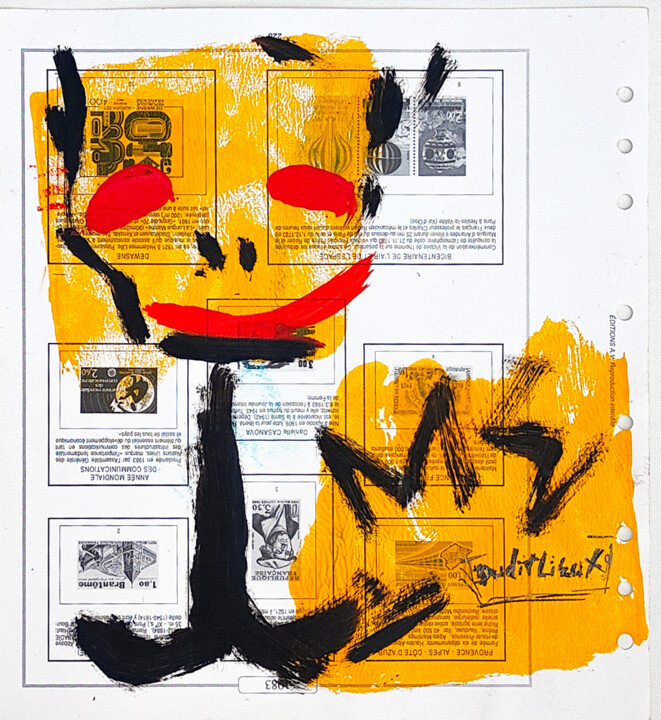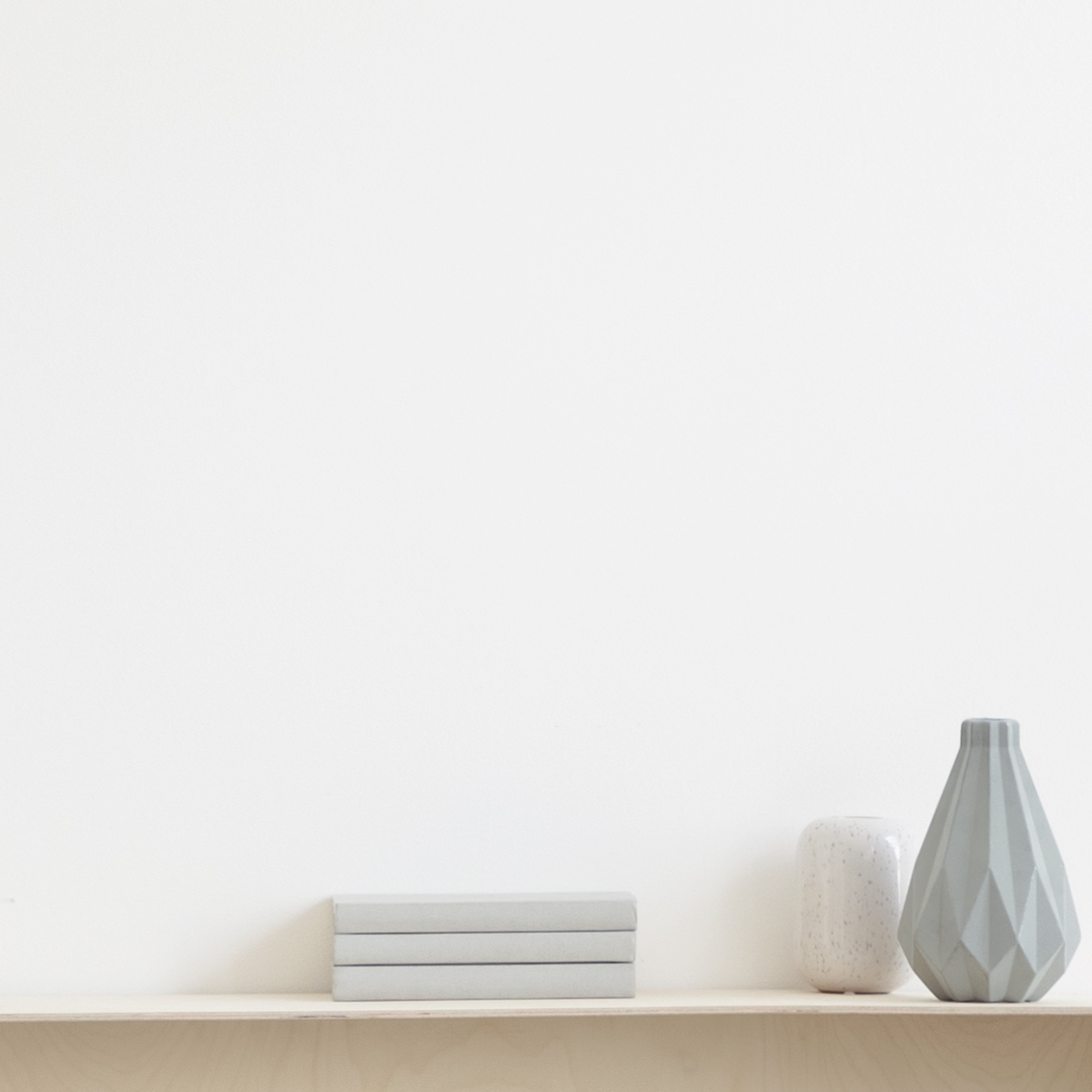


20 art brut art singulier outsider jaune rouge noir (2020) Drawing by Morgan Merrheim
Seller Morgan Merrheim
-
Original Artwork (One Of A Kind)
Drawing,
Oil
/
Acrylic
on Paper
- Dimensions Height 9.5in, Width 8.7in
- Artwork's condition The artwork is in good condition
- Framing This artwork is not framed
- Categories Drawings under $500 Outsider Art Cat
runs away as soon as his name is pronounced: what he loves is
the incognito. His best times are when he forgets how
his name is."
Jean Dubuffet1
Wanting to bring the production and practice of Morgan Merrheim back to the sphere of
art brut would be unjustly reductive. Even if it adheres, explicitly or implicitly-
ment, to some of its founding principles, as formalized by Dubuffet,
our artist is too curious and imbued with the history of art to be assimilated
to those people devoid of artistic culture who constitute the hard core of the arts-
brutalists. He obviously studied, among the old masters, the techniques of
glazing, perspective and transparency, the methods to suggest the pro-
founder and the staging of the plans, looked at the work of Basquiat and Miró and must
confess a debt towards the painters of CoBrA… While accommodating these con-
births and experiments in an air of time imbued with squats, places and circuits
alternatives, collective practices and the search for plastic freedom made available to
harsh test by an omnipresent oppressive plastic good-thinking.
In his works, he proceeds by accumulation, by stratification of several
pictorial layers, often on a support itself pre-printed, in particular
hentai boards. It ensures, however, that each of the successive layers remains
apparent, readable, to incite its viewers, in a process in the opposite direction of
his, to decipher them, to penetrate them. This process of discovering the founding stratum
mental, the first, inevitably brings to mind what Cesare Pavese wrote: "The
life is not a search for experiences but for oneself. Once we have discovered
green its fundamental stratum, we realize that it corresponds to its own destiny and
we find peace.2” However, if the first layer, that of the bottom, is quite
identifiable wind, without any possible doubt, the others lend themselves to readings that are not
not immutable. We can thus draw a parallel with the words of Proust: "Our
me is made of the superposition of our successive states. But this superimposition is not immutable like the stratification of a mountain. Perpetually
upheavals bring old layers to the surface.3”
At the end of this exercise of introspection, in the etymological sense of the word – look
der in, inside –, applied, what do we find? Usually a substrate
of an erotic or sexual nature, but rarely frankly pornographic. At
bottom of this mental dive, is it the self of the viewer or that of the artist that
do we find out? Mon ? The other ? Both ? Narcissism and/or sexuality? In all
cases, Freud's lesson is very present: "Psychoanalysis has never forgotten
that there is something non-sexual. She even raised her whole edifice on the principle of separation.
relationship between two tendencies: sexual drives and narcissistic drives which relate
try to me.4”
The artist explains the practice of stratification in his works by his habit
to change places of work and discover new ones, laden with the traces left behind
sed by their previous occupants. He also acknowledges his debt to mu-
rals and street art. In its own way, it would produce sorts of palimpsests by exploiting
pre-existing materials that he would appropriate, to cover them, while leaving
apparent some of their characteristics.
In some of his works, his approach seems apparently different,
even opposite... On photographic prints, in the format of postcards, re-
result of montages, assemblages, collages and superpositions of digital images
meric, he scrapes, with a sharp point, the surface sensitized then revealed to
engrave the lines of his drawings. He thus seems to replace the viewer in
the exercise of penetrating the complexity of successive layers. It is not so,
however, since the stroke remains hopelessly white and does not highlight anything
which constitutes the complexity of this background which is now in the foreground.
And still remains to be deciphered…
Another of the essential characteristics of Morgan Merrheim's productions
is the speed of execution. This is the reason why his works are only ra-
very large format, which would require too long an execution time for him.
He considers this need for speed as a form of addiction, an emergency for
fight against brain atrophy, out of fear of boredom… He prefers a form of
precariousness and an intellectual nomadism to the certainties of a well-established stability in
routine and repetition. He therefore constantly passes from one technique to another, varies
supports, experiments and tests new ideas, invents recipes... He
does not hesitate to declare: “May not every morning the size be the same, may it
brings neither the comforts of the day before, nor already the desire for tomorrow.5”
What also marks, in Morgan Merrheim's drawings, is the presence
almost systematic characters whose morphology always remains the same
whatever the circumstances of their occurrence. They are, alone or in tribes, similar to those of children's plastic productions, facing the spectator
because, as Marcel Bergeron points out, in children's drawings: "The good
tadpole man is drawn from the front, while the animals are immediately drawn from
profile.6"
On closer inspection, however, these beings are not good men-
tadpoles, they are more complex and could correspond to a more advanced stage
of the evolution of children's drawing. Henri Wallon and Liliane Lurçat describe it: "To
this tadpole stage succeed in an early way of the figures where the mass of the
body is indicated by an ovoid on which is superimposed another smaller ovoid
responding to the head. Sometimes the two ovoids are simply separated by a
strangulation. The type of the ovoid will evolve and take on a diverse meaning
as the child becomes aware of the more complex and segmental structure of the
body. It is first of all a simple point of support for the limbs, arms and legs which
insert themselves radiantly like pins in a pincushion; it's a simple
in a way enumerative schematism there is the belly here, the arms and the legs there. Then
the legs and the arms are differentiated; their point of insertion always remains extremely
capricious; or rather, it frequently responds to conveniences of geo-
elementary metrism, very often inserting itself in the middle of the ovoid which represents the
body, that is to say much too low. Their insertion begins by being
very asymmetrical, then on the contrary responds to conditions of independent symmetry
dantes of their actual position in the human model. So it's around the ovoid
that group the details of the character. But the ovoid gradually tends to approach
close to the model; it embellishes itself with details such as the buttons of a
clothing and it is this accommodation to the image of the character represented that will
evolve into other forms.7”
Morgan Merrheim's men are well made of assemblages
ovoid but do not correspond to any of the phases described here or, rather, borrow
try several of them. They give the illusion of childishness but are, in
fact, much more scholarly and profound. They are expressive, often sad or bla-
ses, feelings that we do not find in the world of childish drawings. Their
clumsiness and awkwardness are more inherent in their personality than in the gesture that
created them. It is intrinsic to them… Sign of a resigned maladjustment to a
world that they do not understand and/or who does not want to understand them? Their
macrocephaly makes them sympathetic to us but marks their belonging to a
world other than ours. That of extraterrestrials, dolls or figures of
manga? It's up to the viewer to decide...
They float in front of the bottom, indifferent to what is happening behind them, in a
fluidity that evokes that of fish in front of the artificial decor of an easy-to-
tick. Some are gendered, some are not. They sometimes affect the form of spermato-
zooids. Sometimes they are so disarticulated that they turn into ideograms of an improbable language from which only the outline of a head and the mark
haggard eyes. A whole humanity to discover, which shares some of our con-
trails but, more often than not, frees itself from it or tries to do so… to create new ones.
new, in a geometry that no longer has anything Euclidean about it...
So we go from surprise to surprise, from discovery to discovery...
see, however, articulating rules or principles to qualify or describe this
universe… Perhaps we can say of the art of Morgan Merrheim what Jean Dubuf-
fet said of true art: “True art is always where you least expect it. Where per-
son does not think of him or utter his name.8”
Louis Doucet, December 2020
Related themes
Morgan Merrheim, a contemporary French artist, was born on October 30, 1982, in Eaubonne, Val d'Oise. Embracing the label of a self-taught post-Literary artist, Merrheim's journey into the world of art has been marked by a relentless pursuit of self-expression and creative exploration.
Throughout his career, Merrheim has exhibited his works at Tambour à Vapeur in Paris, in the Salon du Livre d'art, du dessin et de l'estampe at the Grand Palais in Paris, and at Galerie Langages in Paris and Eplograph gallery/Une Vision Singulière in Saint Brieuc, Côtes d’Armor. Additionally, Merrheim has left his mark on the art scene with his series for the VétoMat association in Berlin and his personal exhibitions at Le Bloc residence and KulturKom Galerie in Paris, showcasing his boundless creativity and distinctive artistic vision.
-
Nationality:
FRANCE

- Date of birth : 1982
- Artistic domains: Works by professional artists,
- Groups: Professional Artist Contemporary French Artists







